by Zachary Clemente
In the quiet early hours of Saturday in New York Comic-Con’s press lounge, Marjorie Liu and I chatted about her new Image title Monstress with artist Sana Takeda, systemic racism, the expectations places on creators of color, and the intergenerational trauma of war. Known for her Marvel work on X-23 and Daken: Dark Wolverine, Liu is known outside of the comics world as a writer of novels. All art below is by Monstress series artist Sana Takeda.
Comics Beat: I attended the Push Diversity Forward panel you were on yesterday and found your response to certain topics and questions a breath of fresh air.
Marjorie Liu: Well, later a journalist said to me, “clearly you didn’t give two fucks, you were just going in,” but a lot of it was just impatience. I feel like it’s difficult to have these conversations in the first place; it’s easy to sugarcoat things that are actually really difficult to talk about, so you might as well address these issues head on.
CB: Something I’m really excited about it comes to your new book Monstress is the depiction of women in all levels of power in the world. What is influencing you to break out of molds we’re used to seeing in fantasy stories?
ML: This whole discussion of the “strong female character”, the “kick-ass heroine” is well and good, but it often seems very narrowly defined to a particular kind of representation – one that is sometimes distinctly masculine. What I also find striking is that no one ever talks about “kick ass male heroes” or “strong male characters”. What is that about? Do we have such low expectations for female characters? Is maleness by default “kick-ass” and women require additional information in order to be “kick-ass”? This whole line of logic totally ignores the fact that women are already by default strong and powerful, and complex. Alas, the truth doesn’t always make it to the page or screen.
And how come when we read quest-fiction — fantasy, science fiction – even when we watch movies or television with ensemble casts – we typically see, like, five men and one woman – or some other completely skewed number? On a practical level I thought it would be interesting, whether or not readers pick up on it, to shift the paradigm and have five women for every one man in my book, just to play with that and have it out there.
So, that’s driving me, this idea that there only one mode of powerful women in adventure. On another level, I grew up listening to my grandparents on both sides talk about WWII. My Chinese side of the family spent the war in China, and my grandfather was part of the Chinese air force and my grandmother was a 14-year-old girl who had to flee her village with a bunch of other children because the Japanese troops were coming. It was a life or death situation. I grew up listening to their stories — on one hand, my grandfather who was in the military — and on the other, my grandmother who was on the ground as a refugee.
I didn’t realize it at the time, but that had a really huge impact on me. In all the pictures I’d see of my grandmother, years after the war, she would be smiling, beaming. Every picture of her, she looks thrilled to be alive – she’s just full of life and that is always how I remembered her. I always wondered to myself: “How does one reconstruct themselves after the trauma of war?” After you survive war, what does it take to put yourself back together again? Maybe some people just bounce through it, but other people don’t. So, what does it take to become human again after you’ve been dehumanized?
That was very much what I was thinking of when I started Monstress, I had this vision in my head of this girl who has survived a cataclysmic war – she’s psychically wounded, she’s physically wounded and she has to put herself back together. That was one of the driving forces as I was thinking about the story, and the other one was racism. You know…flat-out racism and how we dehumanize others, how we can explain away another person’s humanity as a way of excusing some really horrific behavior.
CB: We seek to “Other” individuals for things they can’t control.
ML: Yeah, all these things were on my mind as I was working on the book. More than that, even.
CB: I’m not trying to lump your work into this, but I’ve always been interested in post-war fiction. I have a similar experience, my Italian grandfather fought in WWII as well and my Korean grandparents felt the repercussions in the Korean War as refugees. It’s interesting hearing somebody else talking about this, I’m not sure I’ve even talked about it before.
ML: It’s intergenerational. The trauma of war is truly intergenerational – people don’t think about the ramifications on children and grandchildren, these things just keep moving forward in time.
CB: Since Monstress is, at some level, tackling these ideas and themes, how has it been to pass a history that you’re cognizant of through a fictional filter?
ML: It’s been really hard! [Both laugh] I won’t lie; it’s been really really hard! Just because you have an idea in your head doesn’t mean you have a story and I had all these different concepts and ideas that I wanted to bring to this, but turning that into a coherent story, a narrative, was really difficult. Monstress was originally supposed to come out in June and I had to push it. I thought I had it and I didn’t, and I had to come to the realization that I didn’t have the story, and needed to put the book off until I did. That’s exactly what happened and it’s the reason Monstress is coming out now. It’s also the reason why the first issue is so long because this world is even bigger and more complex than I thought, starting out.
But no, this is not an easy issue to tackle and the thing is, I’m used to writing novels. I know I’ve been writing comics for quite some time but I’m a novelist by trade. When you’re working on a novel, you can write your full 100,000 words then go back and just keep tweaking things. But with comics, you have to send this off to the artist; you can’t keep coming back and revising. Once it’s out, it’s out. When I wrote for Marvel I realized, in hindsight, I had developed certain bad habits. I was playing in someone else’s sandbox with already established characters in an already established world – so I thought I already knew how to write comics.
Except, what I knew how to write were Marvel comics – and this is something very different. So I had to relearn certain skills and strengthen certain muscles before I was capable of writing Monstress; I thought I was ready but I wasn’t.
CB: How long as this story been in gestation for you?
ML: Quite some time. I’ve wanted to write a dark, epic fantasy since I was I was a teenager. These themes that I’m dealing with are not new to me; these are ideas that I’ve carried with me all this time, though I wasn’t quite sure how to put them together. I can’t say exactly that this is a book that’s been percolating since I was 16, but all these themes and all these ideas – there’s a running theme through all my work. Heck, I’ve been writing about women and monsters from the beginning of my professional career.
CB: Have you found that these ideas and characters, with Sana’s work, have been changing and evolving?
ML: Yes. Certain characters that show up I didn’t expect, like Kippa – the little fox-girl. I didn’t expect her to have such a huge role in the book. Same with the two-tailed cat who shows up in the first issue. They were a whim and then the whim became an actual arm and leg of the narrative.
CB: I love that there’s a natural and evolutionary way that writing works and it’s all you can do sometimes to keep it on on the rails, which is why I’m impressed that Monstress kicks off with a sprawling 70 page first issue with a colossal amount of information that reads really well.
ML: Hah, thank you.
CB: What is the workflow process between you and Sana like?
ML: It’s really kind of beautiful. I spend a lot of time in Japan and every time I’m there, especially this last trip, we hung out and talked about the book. It’s a real collaboration, you know? She’s amazing, both as a person and artist.
During the last trip to Japan, I visited the Teien Art Museum (previously the residence of Prince Asaka Yashukio), where the interior is completely art deco. It’s an extraordinarily beautiful place, and I knew instantly that was how I wanted the book to look. All I had to tell Sana was “art deco”, and she took that and went wild. Her backgrounds are glorious, and the rest of her art has shaped the book in unexpected, lovely ways. Early on she sent me sketches of what she thought the kaiju would look like. I saw those, my jaw dropped, and I immediately revised everything I knew about this book, and what those creatures are. The designs were so sublime. Part of the reason Kippa became such an important character is the way that Sana drew her.
CB: She’s very emotive.
ML: She’s so emotive! I think Sana has a lot of fun drawing her because there’s so much energy in her lines and face.
CB: Like when she’s clutching her tail.
ML: Yeah, yeah! Oh my gosh, Sana is constantly inspiring me, and not only that, she inspires me to do better because God help me if I write a bad script for an artist this wonderful. It would be a shameful thing.
CB: I would say that’s a sign of good collaboration, to push each other forward. I’m assuming the next issues won’t be quite as long?
ML: No, no. The next issues will be around 20-22 pages.
CB: Makes sense. You and Sana met through Marvel?
ML: Yeah, we worked on X-23 together.
CB: It’s interesting, you often see art that isn’t typically expected in American comics make it on to covers, but rarely interior art, at least for DC and Marvel. It’s exciting to see work like hers telling the story. What sort of agency is she afforded in Monstress?
ML: Oh, as much as she wants, because I trust her absolutely. If she wants to draw something, I’ll be like, “Let’s do it.”
CB: Something I wanted to ask after the diversity panel yesterday is how do you make the judgment call when it comes to imperfect characters who are POC, women, or other individuals of disenfranchised backgrounds? For instance, in Monstress, there are women who are very ill-tempered individuals who you wouldn’t want to cross and there is a lot of violence.
ML:This was brought up in the diversity panel yesterday – someone asked, “What is the pressure put on the writer to not have a gay villain or a villain of color?” Part of the thing is, when there’s so little representation already out there, every bit counts. But…we’ve spent generations working to be treated as full human beings in a society that is always trying to dehumanize us. And part of being a full human being is imperfection – being allowed imperfections.
Still, if you’ve got just one black guy in a story that’s full of white people and that black guy is the villain, then yeah, that’s problematic, that’s feeding into this continuum of racist imagery. Same thing when I turn on the television and the only Chinese men for miles are evil kung-fu gang members. Whereas if I watch a show that’s all Chinese (heroes and villains alike), then okay, that’s a more nuanced situation.
With respect to Monstress, listen: women have tempers. And the best characters in stories are imperfect. That’s life. There’s no such thing as a perfect person – that’s okay. We have to learn and accept that a person can be simultaneously good and decent in some areas, and a total Diablo in others. The heroine, Maika, is not a nice person. But why would she be? She’s been through hell. Part of her journey is learning how to tolerate the vulnerability that is required to be kind, and a good friend.
But I understand the pressure as a woman of color to actually represent well. Because, again, there’s so little representation out there that when we write characters from diverse backgrounds, we want to be champions, you know?
CB: That’s something I find salient to being Asian American. The idea of the “perfect minority”, the “exemplary minority” which perpetuates this idea of superior white culture.
ML: The thing is, white characters are allowed to be imperfect — and often celebrated as such. It’s deeply problematic for me that we are not afforded the same luxury of imperfection within our work; that somehow if we’re writing imperfect characters, we are casting a bad light upon other Asian Americans or whomever we’re writing. That’s deeply problematic because, as artists, perfect characters are not interesting, perfect people are not interesting.
CB: They’re not relatable.
ML: No, not at all, and the thing is, in Monstress, every character is deeply flawed. Every character in Monstress has an issue; they all have an imperfect life that they’re battling with and it’s going to make them do really stupid shit. The heroine, Maika, is focused, she’s going to be selfish, she’s going to have a one-track mind. She can be cruel, quick-tempered, even murderous. But that’s okay, that’s her character. She has become that way and she’s going to become something else as the journey continues.
The rest of the world already views people of color in really fucked up ways. Nothing we say or do is going to cure that, you know what I mean? I feel like as long as I’m keenly aware of the stereotypes that are perpetuated against Asian Americans, I’m allowed opportunities to either subvert them or avoid them. That’s all that can be asked of writers of color who are telling these stories; that we be aware so we can subvert or avoid — but that doesn’t mean we have to write perfect people.
CB: Some of my friends and I are running into this issue since we’re mixed-race and it’s becoming apparent that people are expecting certain kinds of work from us. That is somewhat based off us being comfortable discussing certain issues, but while the work doesn’t need to be about it, incorporating it is crucial. With Monstress, I felt this interesting combination or using genre for social discourse and even though it’s fiction – it can be something more. Is that something that it could be doing?
ML: I think we have to look at the wider body of work that others have been doing, where it’s very difficult for people to hear certain truths if they’re said bluntly. There’re some things so horrible that it’s just impossible for people to incorporate them. So for example, let’s take the Holocaust; you read a textbook about what it was like to be in a concentration camp. Okay, fine. Then you read Maus. That is a completely different experience that is impossible to escape. You read Maus and you’re in and immersed – you are living that history on an intimate level. I think that’s what fantasy and science fiction can accomplish. Reading about the history of slavery is very different from a reading work a fiction that tells a story about slavery that makes you understand it on an intimate level. If Monstress is able to achieve that on some level with its themes of racism, slavery, with what it means to be a woman, the atrocities of war, etc – great.
But as the writer, I can’t control how people react to the book. Once the work is done, I have no control over how people interpret the story, what people will take away from it. So I send it out there, and if people want to read deeper into its themes, that’s good – but it’s not necessary.
CB: I think that’s pretty cool. Just by sheer fact of being considered a genre book, it automatically changes the way people will perceive the work.
ML: Genre can be very sneaky when it brings in certain ideas, yeah.
CB: When it comes to genre fiction, what sort of work is influencing you in the way you’re managing this colossal world and these complex characters?
ML: Dude, I’m a voracious reader, I read everything. I think that’s part of the reason I’m a writer, because I read so much. What’ve been my influences? Gosh…I said earlier I’ve been wanting to write an epic fantasy since I was sixteen and reading David Eddings and Mercedes Lackey and, I don’t know, Tamora Pierce. But just as influential? Cao Xueqin, Maxine Hong Kingston, Octavia Butler, Isabel Allende, Borges, Neruda, Jamaica Kincaid.
CB: That seems like a perfect place to wrap up, thank so much for joining me Marjorie.
ML: Yeah, thank you too!
Marjorie Liu is an attorney, writer of prose and comics, and lives in Boston, MA where she lectures at MIT. The first issue of her newest comic Monstress at Image with artist Sana Takeda and letterer Rus Wooton hits stands November 4th, 2015 with a whopping 70 pages of content.


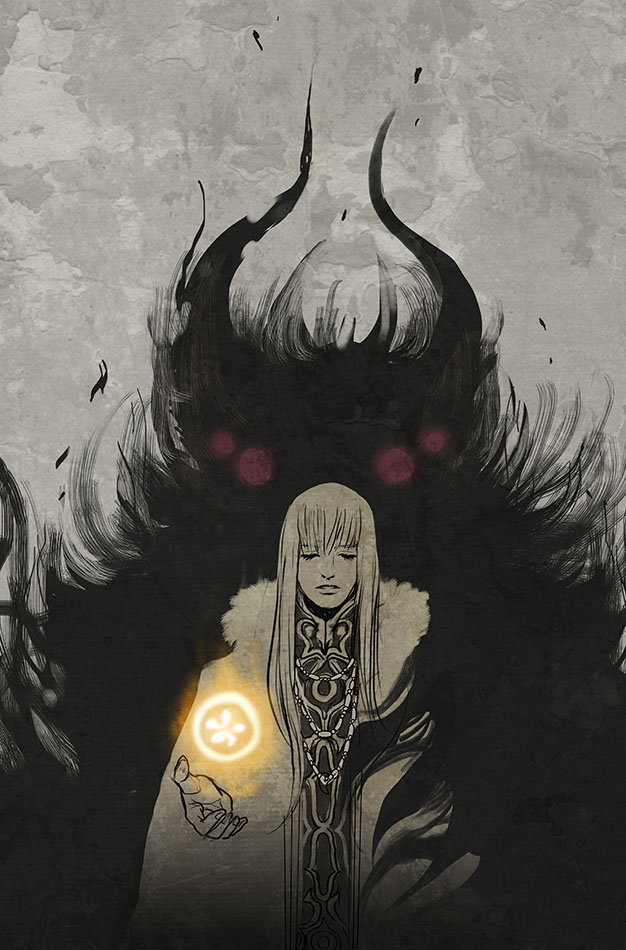
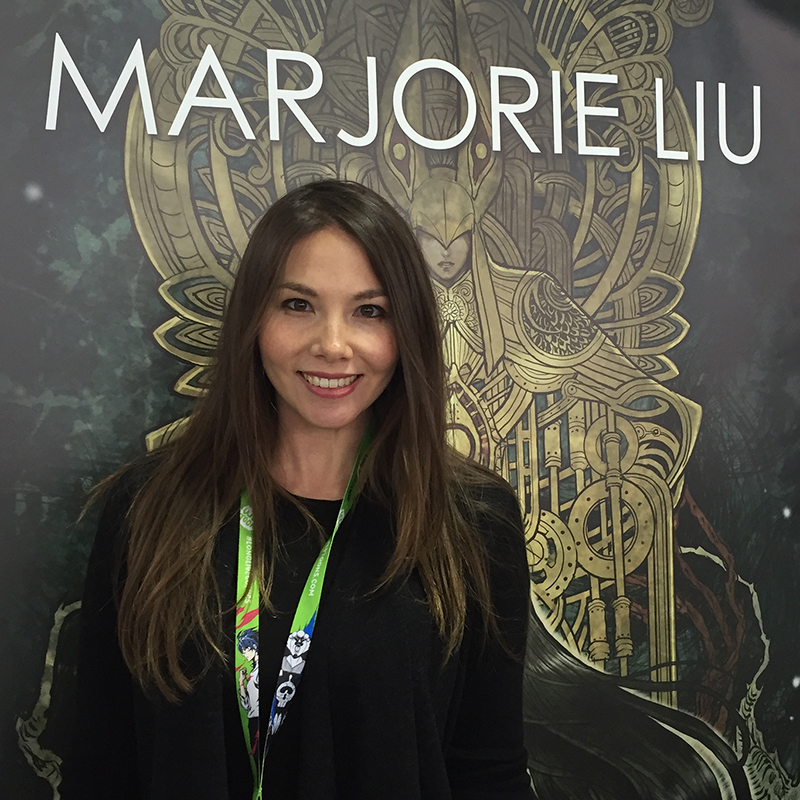
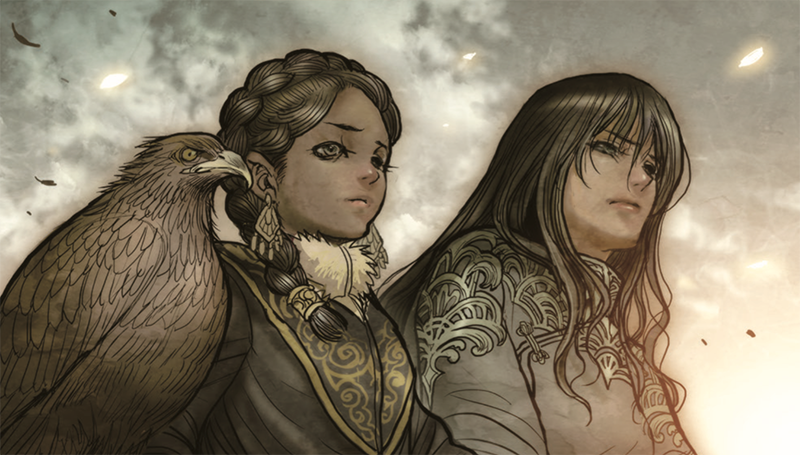
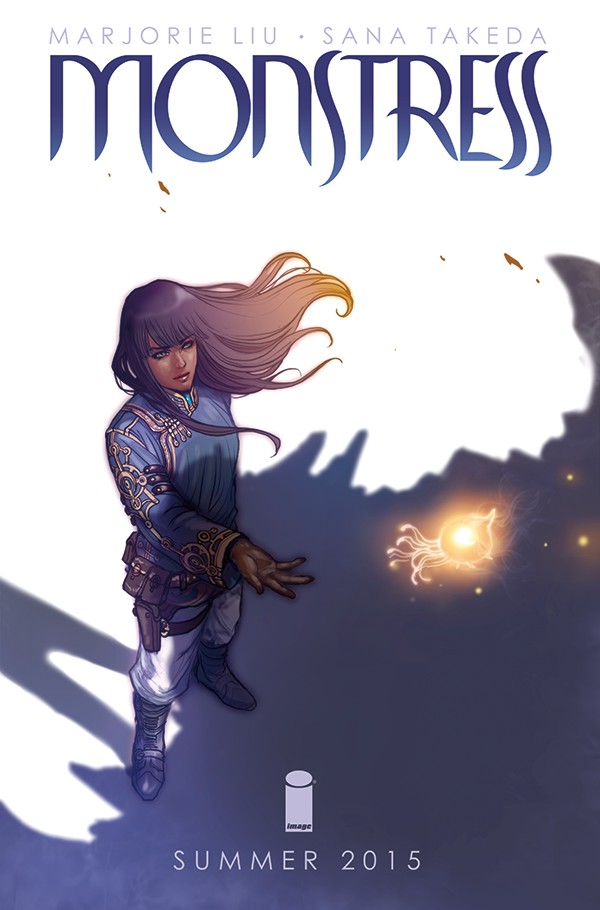
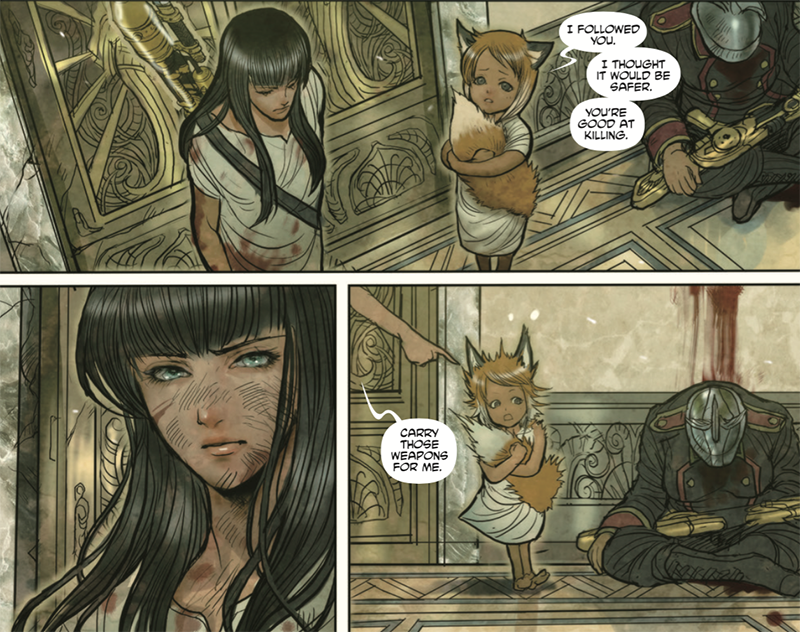
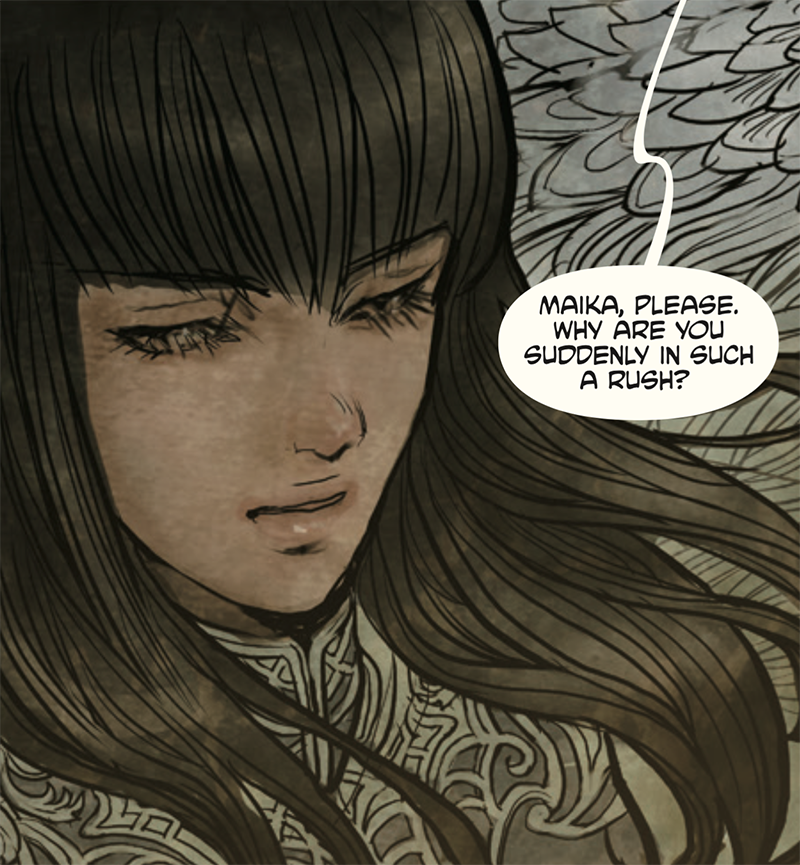
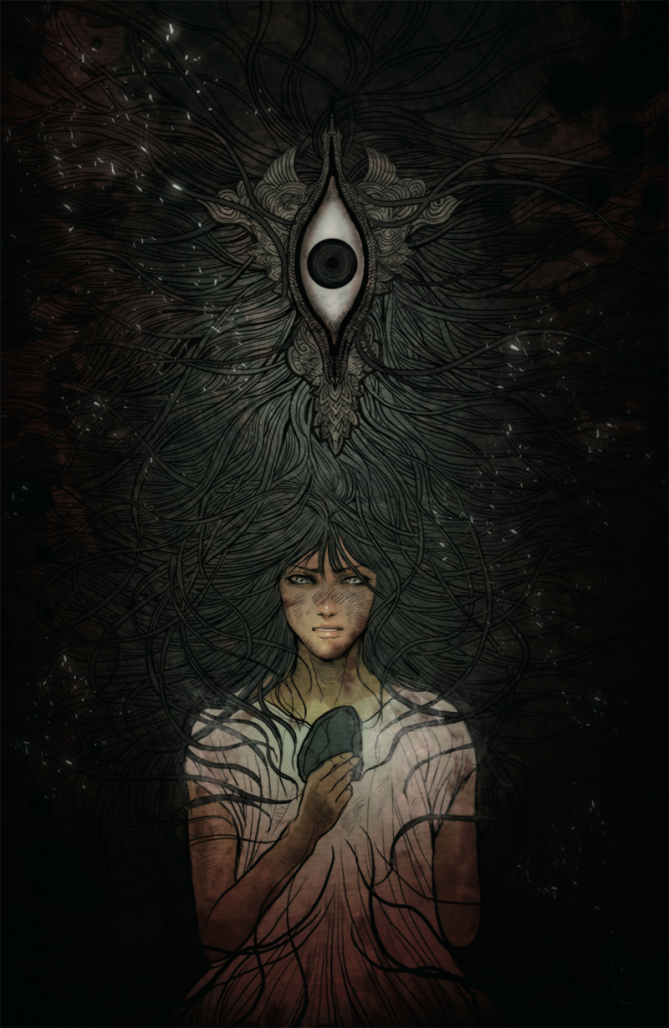
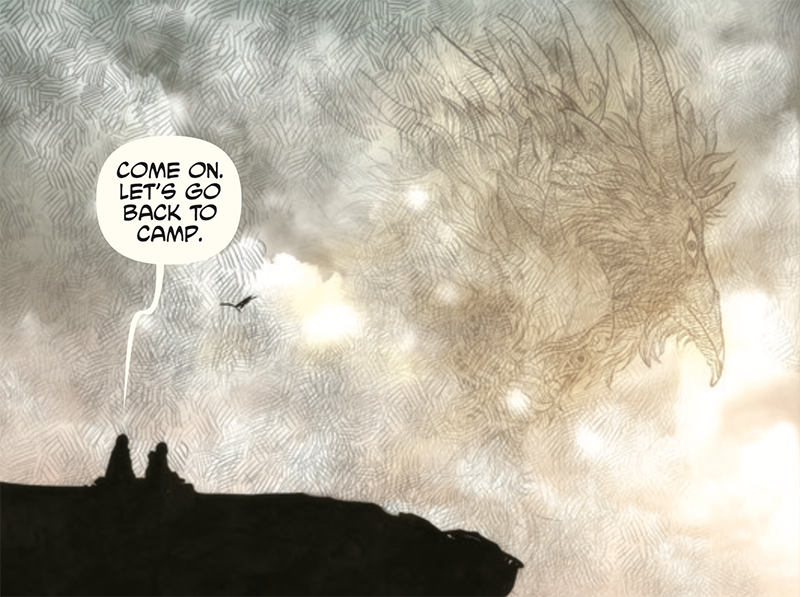
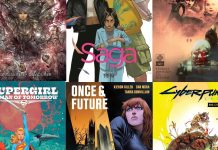

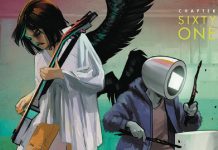


Everything about this interview makes me want to read Monstress even more. And considering that I still miss the X-23 ongoing now, I’m confident the team can deliver on all this promise.
“I said earlier I’ve been wanting to write an epic fantasy since I was sixteen and reading David Eddings ”
Ha! That’s pretty much me.
Comments are closed.